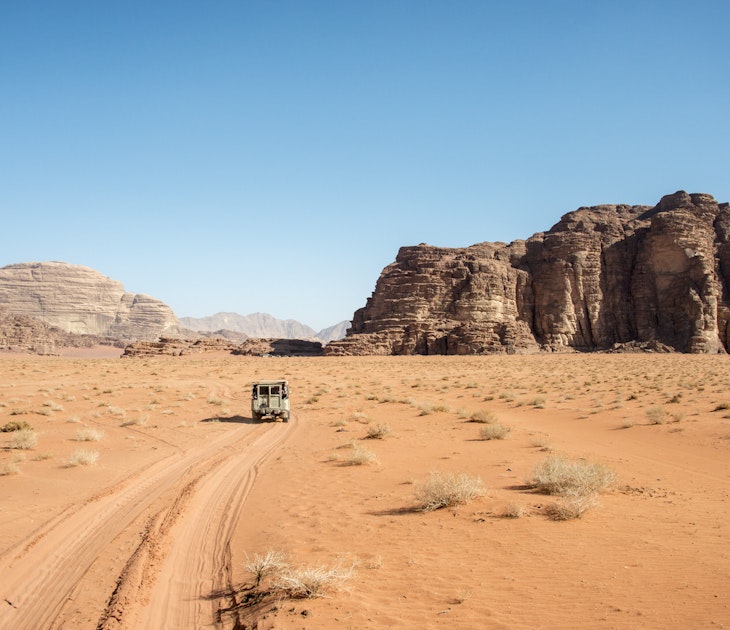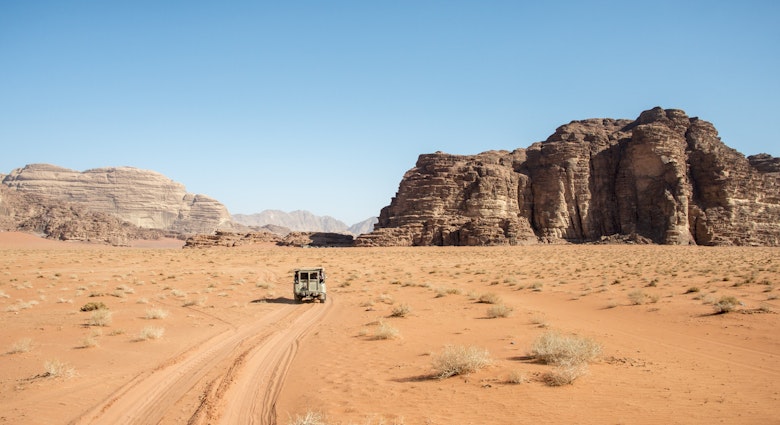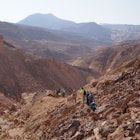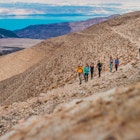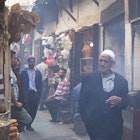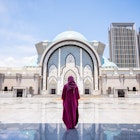Jordan’s new long-distance footpath offers travellers the chance to follow in the wake of prophets and shepherds on a journey that traverses lost cities, parched wadis and some of the wildest quarters of the Middle East. Here we tackle the three-day section from Wadi Dana to Petra.
This article appeared in the October issue of Lonely Planet magazine’s UK edition.
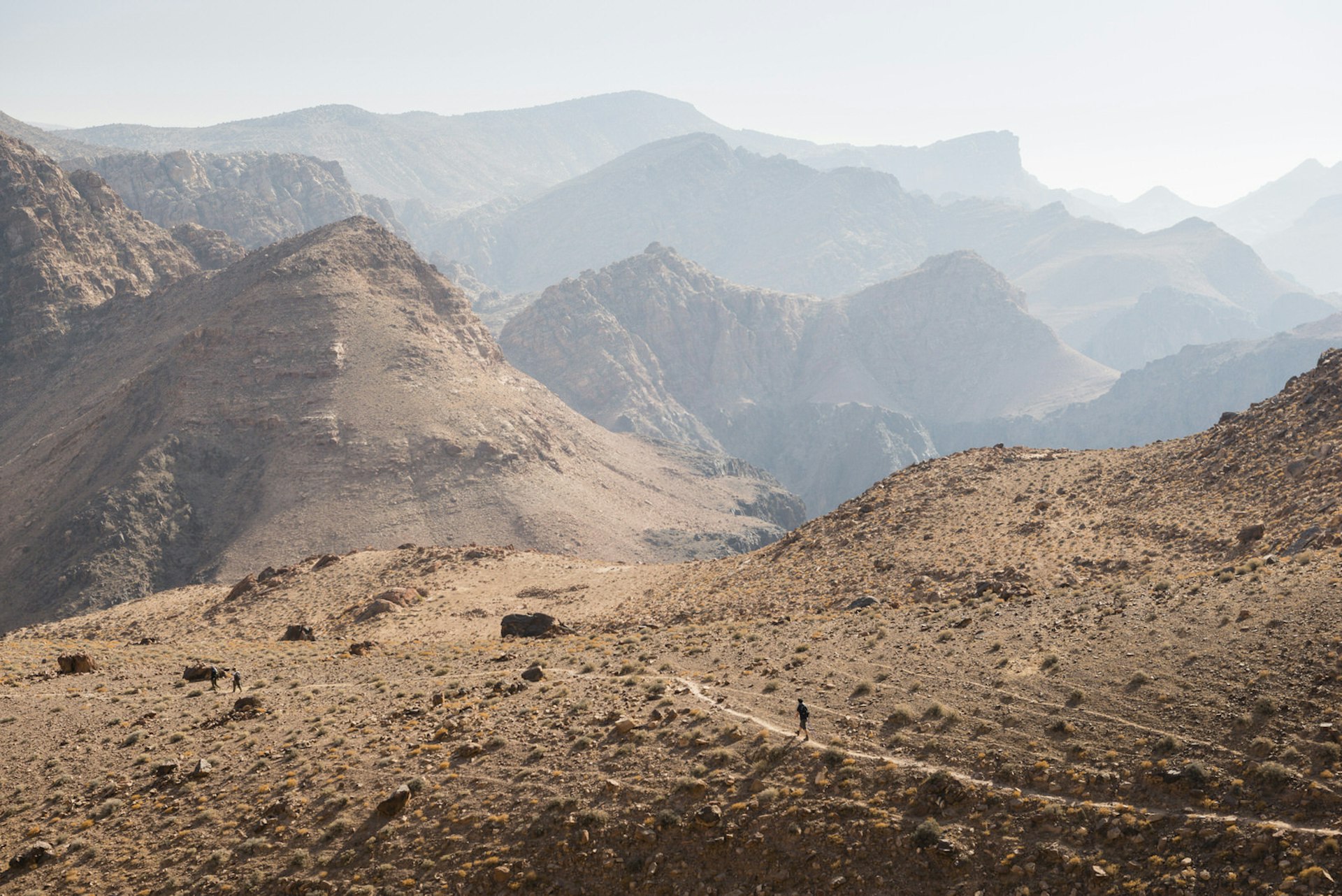
Day 1: Wadi Dana to Wadi Feynan (9 miles)
There is no part of planet earth worse suited to hiking than the Middle East. Setting out for a stroll one morning with a backpack and a sandwich, you are likely to run into checkpoints, barbed wire and people in uniform sternly telling you to turn around.
Were Abraham to journey to Canaan in 2018, he’d have to cross two war zones and three areas where his standard travel insurance policy was invalid. Were Moses to lead the Flight from Egypt today, he’d have spent the entire Book of Exodus twiddling his thumbs in the queue as 600,000 Israelites passed through multiple high-security borders.
All of which makes the creation of the Jordan Trail something miraculous. It is a new long-distance footpath, spanning the length of the most peaceful country in the Middle East. It stretches 400 miles, from the green orchards of the north to the meeting of red sands and Red Sea in the south.
It offers a rare taste of hiking in a land with an illustrious history of rambling: Old Testament prophets with crooked staffs, barefooted pilgrims on journeys to Mecca. And also Mohammed Al Homran, my softly spoken guide, who recently made history as part of the first team to walk the length of the Jordan Trail. He never leaves home without a teapot and a flute in his backpack.
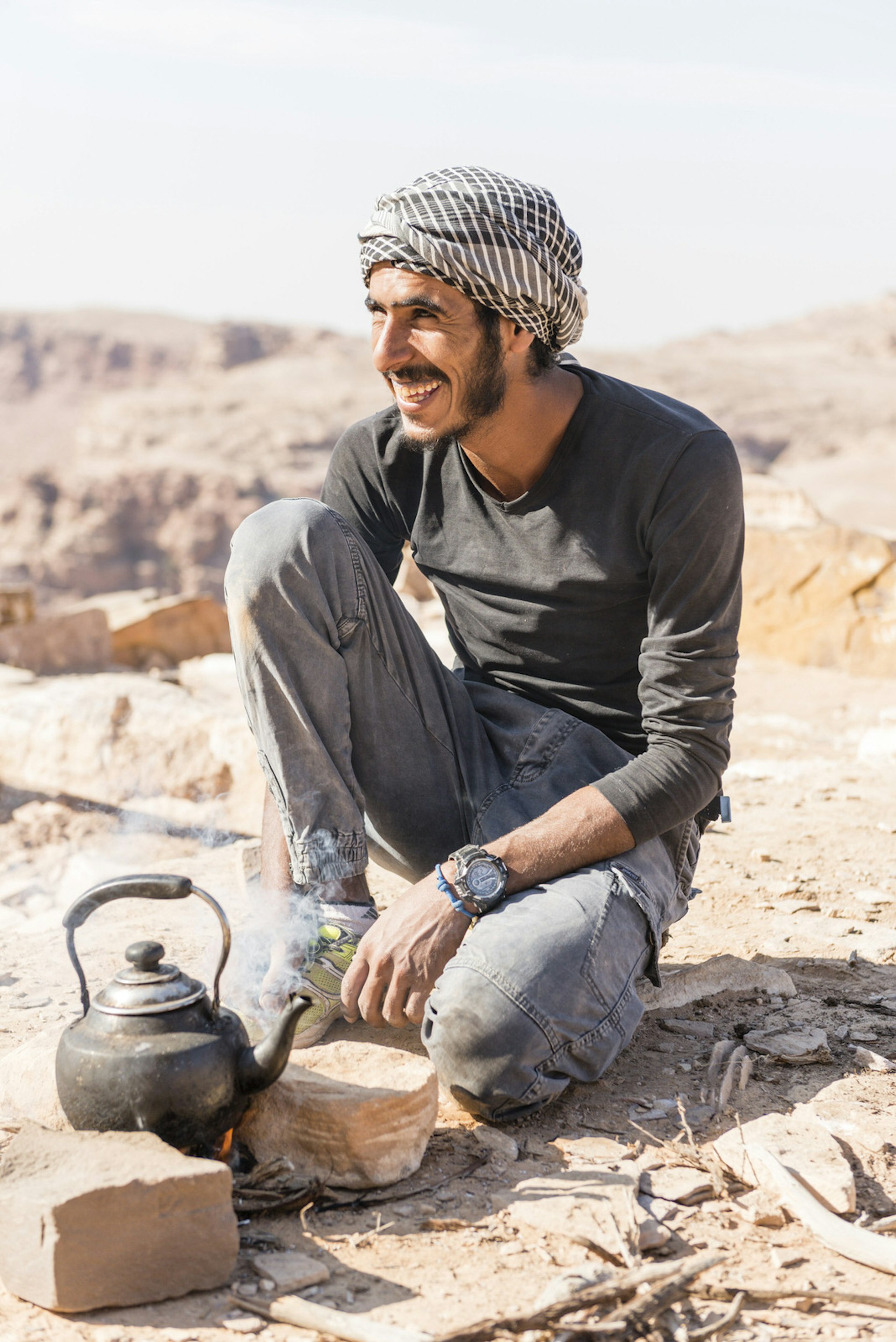
‘Walking is my life,’ he says, skipping over the boulders of Wadi Dana in the morning sunshine. ‘Some people even tell me my feet move in my sleep.’
Sporting a pair of neon-yellow trainers and a black keffiyeh, Mohammed will guide me on a 50-mile stretch of the Jordan Trail, from the mountaintop village of Dana south to the ancient city of Petra.
He grew up in Madaba, a town close to Mount Nebo, from whose summit Moses sighted the Promised Land in the Book of Deuteronomy then dropped dead aged 120. Until recently, Mohammed worked as a shepherd – leading his flock among the hills by the Dead Sea, singing to them at night so they knew that they were safe.
In 2016, he heard about the new Jordan Trail and applied for a job. He now considers hikers to be easier customers than goats – most of the time.
Few sections of the trail are lovelier than Wadi Dana. We pass through green canyons where mistletoe sprouts in the hollows, and pistachio and fig trees grow around hidden springs. At the top of the valley are villages that get buried under a metre of snow in cold winters. At the bottom is the furnace-hot desert of Wadi Araba – the northern end of the Great Rift Valley, where flies buzz about thorny acacia trees. Even those familiar with the region would be surprised by the wildness of Wadi Dana. It is a landscape left on factory setting since biblical times.
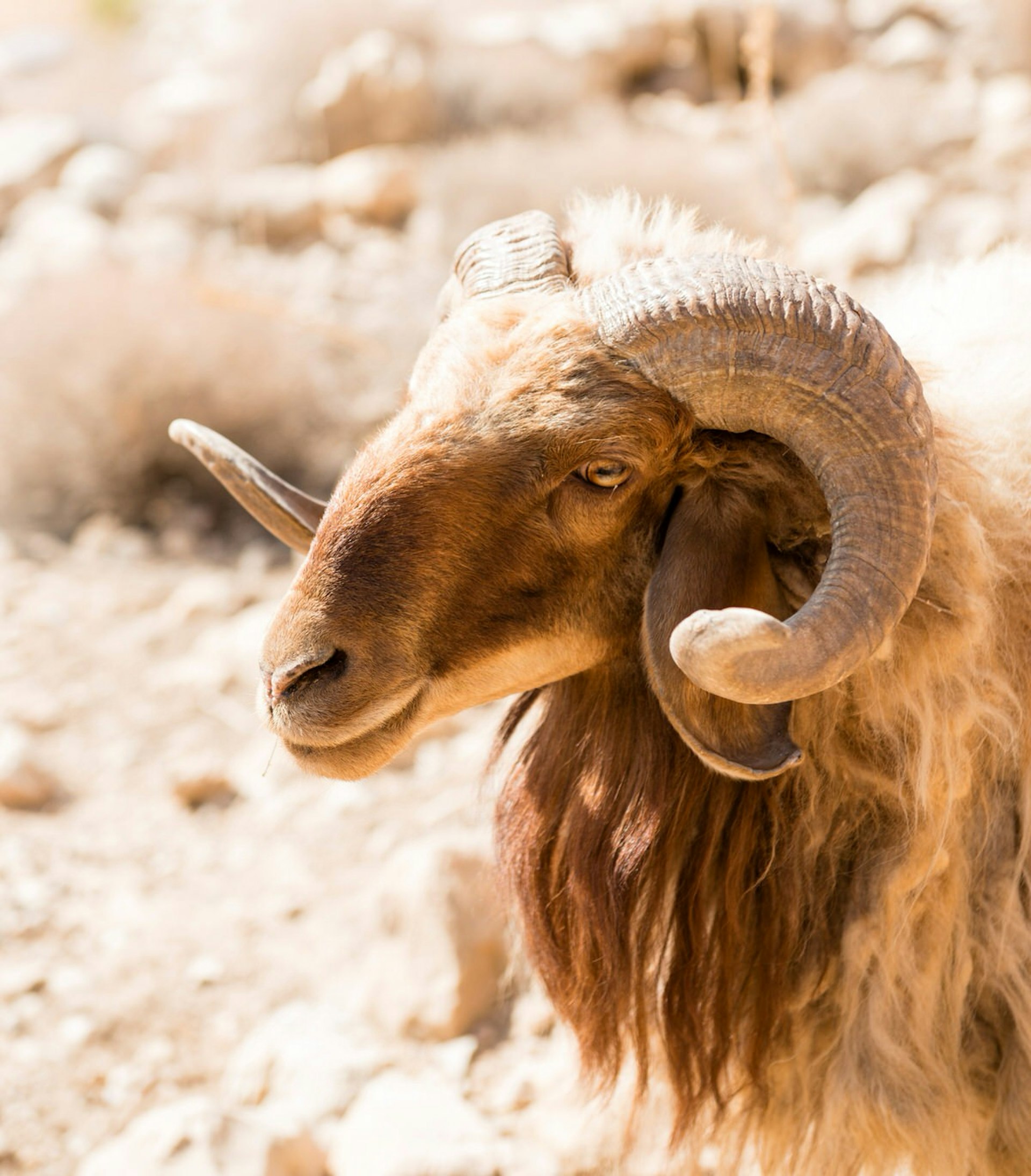
A local legend goes that Jesus Christ used to rest beneath the oak trees of Wadi Dana on his walks. On this occasion, however, it’s Salem Ali Al-Naanah – a park ranger – sitting in the shade and smoking a cigarette.
‘This is the last wilderness in the Middle East!’ Salem explains, focusing a pair of binoculars on a little desert owl in a crag. ‘Whenever I walk here, it makes me want to live freely like the birds. Just sleeping under the rock, carrying nothing but maybe a pack of sardines.’
Formerly a lieutenant in the Jordanian army, Salem grew up in Wadi Dana. Long ago his family exported homemade olive oil to Jerusalem on donkeys, where it was used to light the streetlamps of the holy city. Today, he is a custodian of the Dana Biosphere Reserve – helping protect the endangered Nubian ibex whose hoofs can be heard clattering about the canyons, and the griffon vultures that ride the thermals overhead.
Salem is also knowledgeable about djinns – genies – of which there are a healthy population in Wadi Dana. One local recently complained of a djinn throwing stones at him when he was on his mobile phone (it stopped when he started reciting verses from the Quran). Salem points out a nearby cave, home to a dangerous djinn with a history of smiting trespassers dead. These two, however, are not a representative sample.
‘Djinns are like people: there are good djinns and bad djinns,’ he says. ‘Of course, nobody around here believes in ghosts. But everybody believes in djinns.’
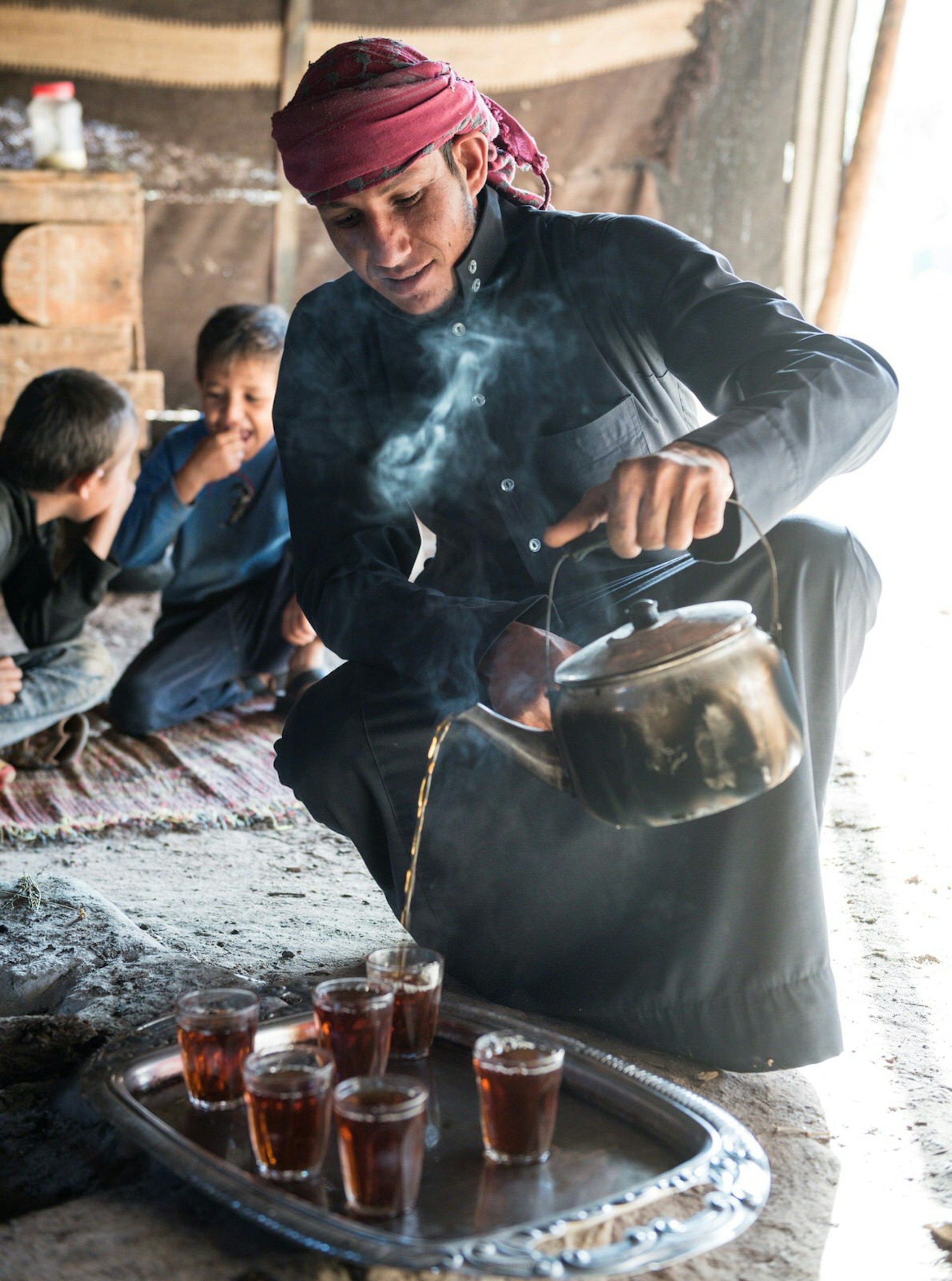
Day 2: Wadi Feynan to Wadi Feid (9 miles)
There is no ingredient more important to the Jordan Trail than tea. It’s served for breakfast, lunch and dinner, and at various intervals in between.
A pot of sweet tea is the reward for scaling a difficult summit, and a consolation prize for giving up short of the top. Tea is energy for the weary and medicine for the sick. Much of what you need to make tea is found on the trail: juniper sticks for fuel (combusting with zero encouragement), twigs of sweet woodwort for added flavour.
Tea is also a way of finding your way through the wilderness of Wadi Feid. With no other hikers in sight, this is the wildest stretch of our trek – an arid section of steep mountains and exposed ridges. The soot from teatime campfires is confirmation we are following footpaths described by millennia of shepherds’ footfalls.
By mid-morning we are scrambling up a gully, finding handholds in the sandstone. By lunchtime we are at the summit, eating flatbread sandwiches on the roof of the Middle East, looking down at birds of prey in flight. By late afternoon we are back down in the cool of the canyons, picking our way through bamboo groves, feeling alone.
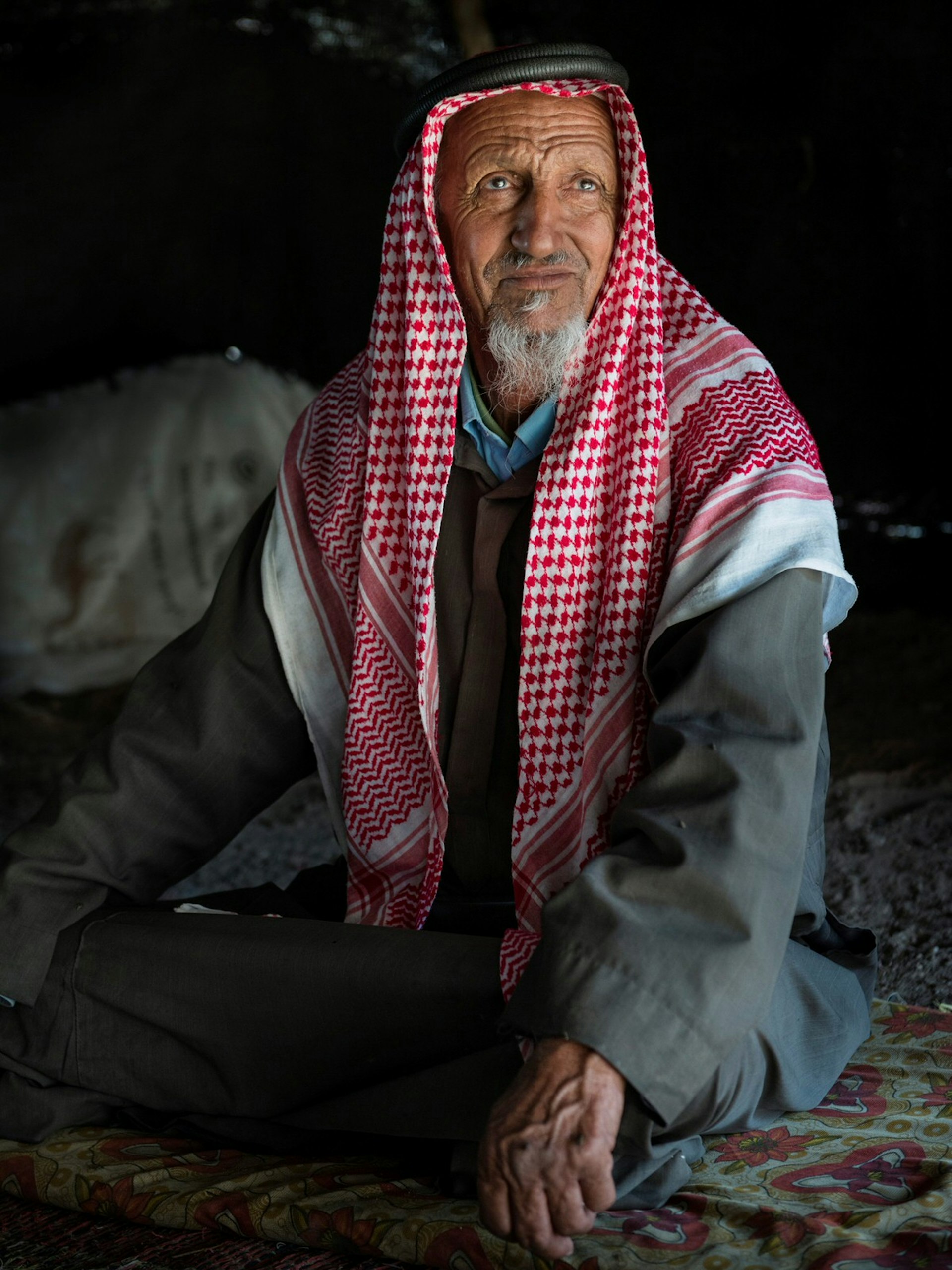
Or almost alone. Wadi Feid is one of Jordan’s last strongholds of traditional Bedouin communities – the nomadic Arabs who once roamed across Arabia and the Levant, from the Indian Ocean’s shores to the foothills of Anatolia. In recent times, many have moved to towns and villages, their freedom eroded in the age of passports.
During our walk, Bedouin shepherds occasionally appear in the distance. Sometimes we see a cloud of dust, kicked up by a flock out of sight, or a smouldering campfire left by a recently departed shepherd.
Before long, we come to a Bedouin encampment, where Abu Mohammed of the Beni Atieh tribe welcomes us into his goatskin tent. His 40 goats are munching contentedly on wild parsley outside.
‘Being a shepherd is a lonely life,’ he explains. ‘You are dependent on your sheep, on your goats, and on God.’
Over another pot of tea, Abu Mohammed explains how, until 30 years ago, he and his family were nomads. They would spend their winters in the deserts of Wadi Araba, keeping watch for wolves that would stalk the flock. In summers they would camp at the mountaintop village of Shobak, beneath the battlements of a Crusader castle. Now their camp is permanent, so his grandchildren can go to a nearby school. Abu Mohammed misses his long walks.
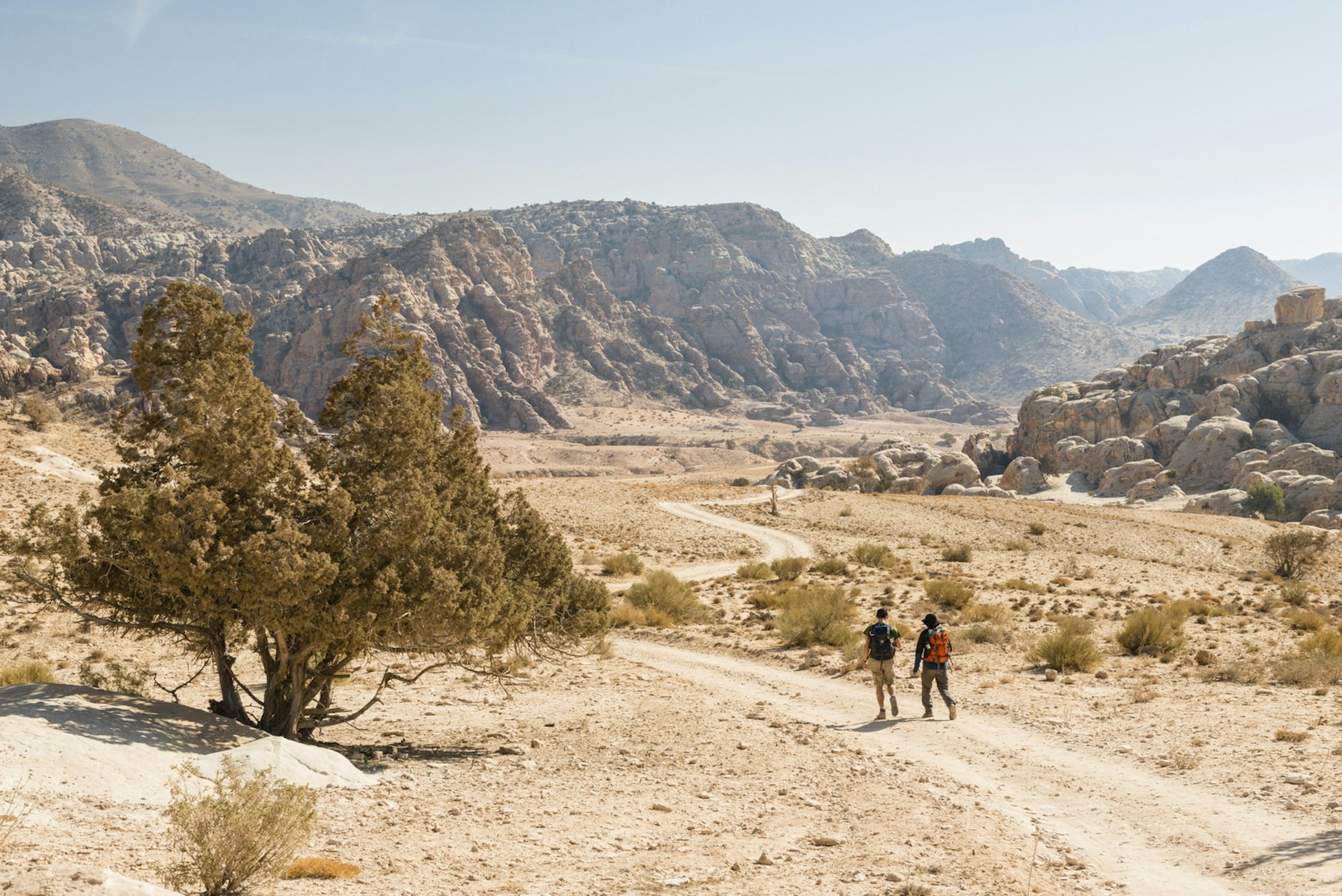
‘Now I am an old man, my knees hurt and I cannot walk far,’ he says. ‘When I was young and unmarried, I would walk for 10 days or more with my flock, thinking of the future and the past, with no-one but Allah for company.’
Sunsets are long and spectacular in Wadi Feid, the sun scattering gilded beams over the Negev desert in Israel and the Sinai in Egypt. Islands of light cling to the top of the peaks, before being swallowed by evening shadows.
Tonight’s accommodation is a mattress set down on the earth. We barbecue some chicken and watch other campfires twinkle on distant hillsides as notes from shepherds’ flutes carry through the cool air.
‘A hotel feels like a strange place to me,’ says Mohammed, stoking the fire. ‘Under the roof of stars I always feel like I am at home.’

Stories are shared after dinner. There is the tale of the Jordan Trail hiker who woke screaming in the night to find a bite on his bum and a gerbil in his sleeping bag. And the story of the famous leopard of Wadi Feid, who would fleetingly appear in the sights of hunters to exhaust their ammunition, before hunting the hunters himself. Leopards haven’t been seen in Wadi Feid for 50 years.
The outlines of the mountains rise among the constellations. Before bedtime the full moon appears. It is like a second dawn, milky blue light touching the sandy wadis, giving the desert a seabed-like appearance. All is silent but for the call to prayer from a faraway village.
Deserts have a raw spiritual power like no other landscape. The desert was where Christ wandered for 40 days and 40 nights. Where the Prophet Mohammed heard the command of the Archangel Gabriel in a cave. Where Luke Skywalker found Old Ben Kenobi in a lonely canyon.
The story of mankind has been shaped by mortals who met their gods and demons while pottering through the wide-open spaces of the Middle East. And even for those of no faith, it takes just a short hike in a desert to experience many revelations. To walk for hours in the sweltering sunshine and be eternally grateful for the shade of a solitary tree. To trek for miles in the dust and hear the sound of running water as unfamiliar and beautiful music. Most of all, to be in a place where the absence of living things makes the presence of any life at all seem rather miraculous.

Day 3: Wadi Feid to Petra (14 miles)
Of all the travellers in this part of Jordan, none is more famous than maverick Swiss explorer Johann Ludwig Burckhardt.
In 1812, Burckhardt heard whispers of a lost city very close to the Tomb of the Prophet Aaron, brother of Moses, on Mount Hor. He disguised himself as an Arab traveller on a pilgrimage to the tomb and, in doing so, stumbled across a metropolis forgotten by the West for nearly 1500 years.
Petra was the two-millennia old capital of the Nabateans, a merchant people from Arabia who grew rich taxing passing caravans. Burckhardt entered the gates of Petra not knowing what lay beyond. Vast tombs appeared with every turn of the canyon, and his guides grew suspicious of his motives and identity as he gazed up in wonder at the heathen temples.
Today, souvenir stalls and queues of tourists crowd the main entrance to the city. But arriving at Petra on foot from the north is to get a tiny sense of what it was like for Burckhardt, happening across a city that springs out of the landscape unexpectedly.
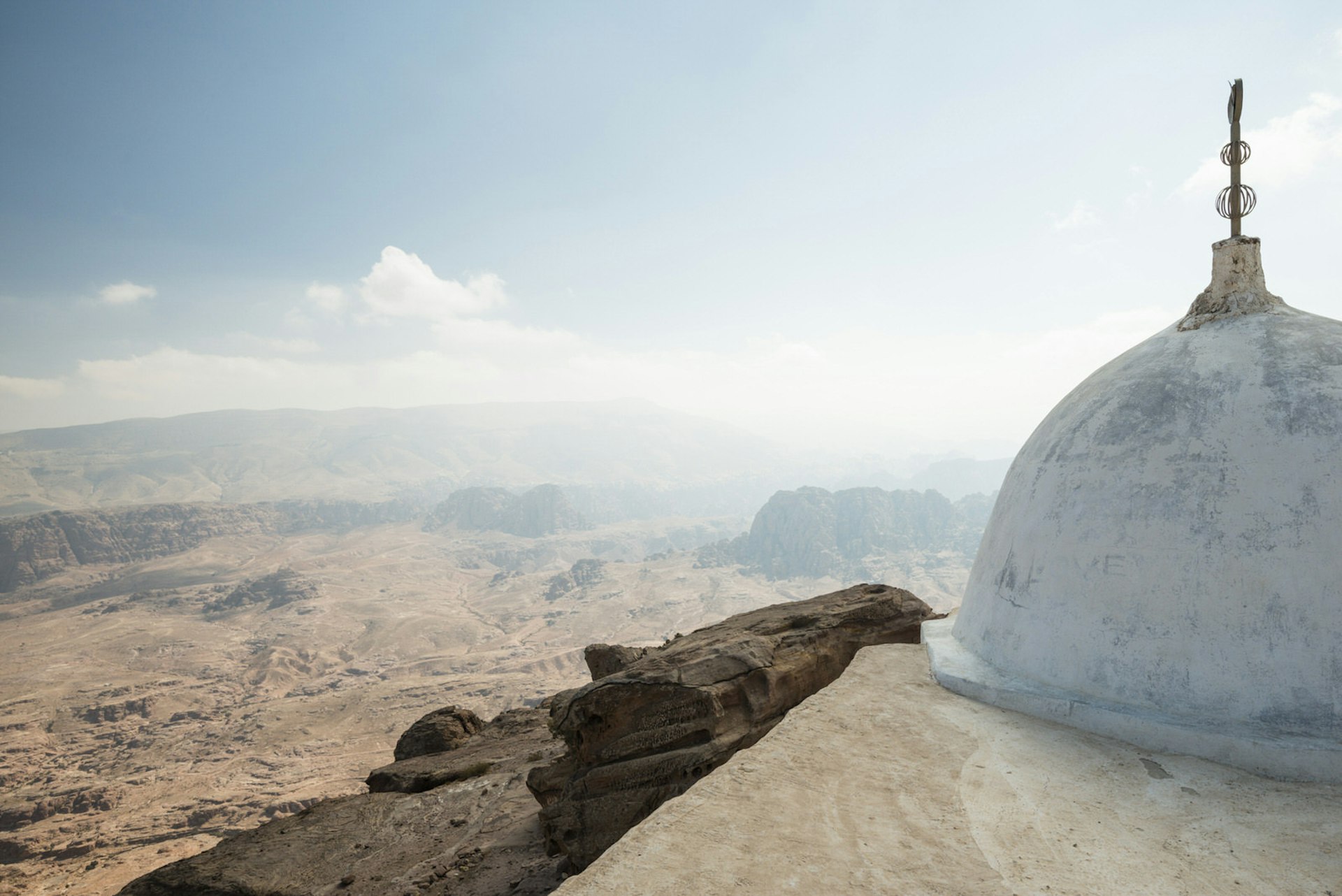
Mohammed leads the way, shimmying along gorges and scaling staircases hewn from sandstone. We pass through the quiet outskirts of Petra – places where Bedouins still camp inside Nabatean tombs, and sheep graze in the sacred high places. Some tombs are perfectly preserved; others are vague and eroded, as if slowly being forgotten by the rock.
While Petra receives millions of visitors each year, Burckhardt’s original destination, the Tomb of the Prophet Aaron on Mount Hor, receives few. It is a sacred place for Jews, Muslims and Christians.
We climb to the top of the mountain, where there is a little whitewashed tomb, guarded by a Yale padlock, and just one pilgrim: Guillaume Duserre, a Christian from Paris. Guillaume drives commuter trains out of Gare Montparnasse. He dreams of driving the Eurostar to London St Pancras.
‘This place has a spiritual atmosphere,’ he says. ‘It looks just like the landscape you imagine when reading the Bible.’
We sit down on the roof of the tomb, share a tangerine and admire the panorama. To the east is the Monastery, Petra’s tallest façade, looking miniature among the mighty cliffs. To the north are the trails that wind over the mountains to Wadi Feid and Wadi Dana. And to the west is the dusty sweep of the Great Rift Valley. From here, it runs south over the Red Sea and into Africa, passing Ethiopia’s highlands, the grasslands of Kenya, the foot of Kilimanjaro, to the place where the story of mankind began – and the starting point for the first big walk.
This article appeared in the October 2018 edition of Lonely Planet Magazine. Oliver Smith travelled to Jordan with support from the Jordan Tourism Board. Lonely Planet contributors do not accept freebies in exchange for positive coverage.
https://shop.lonelyplanet.com/products/jordan-ebook-10

